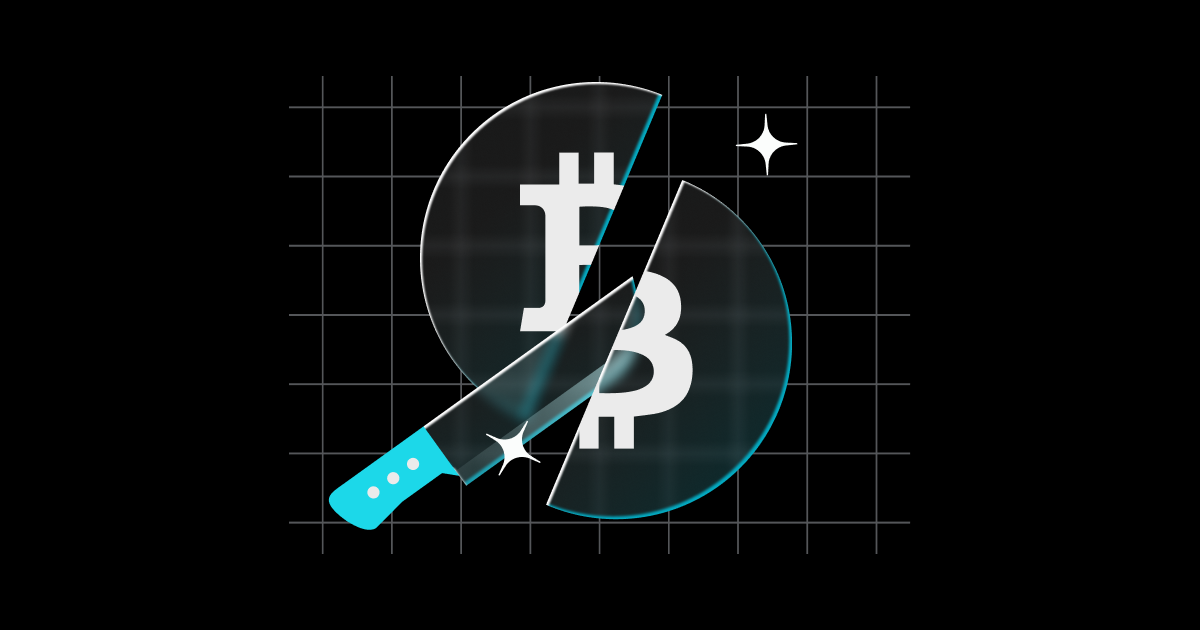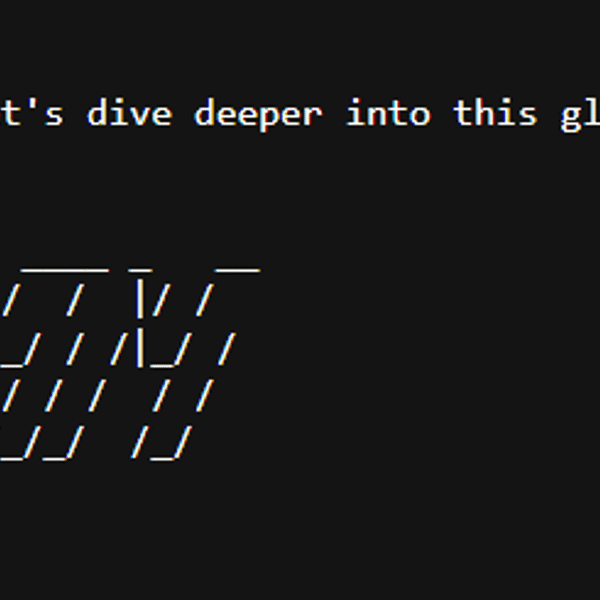Bitget:全球日交易量排名前 4!
BTC 市占率63.17%
Bitget 新幣上架 : Pi
BTC/USDT$ (NaN%)恐懼與貪婪指數66(貪婪)
山寨季指數:0(比特幣季)
盤前交易幣種SOONNEW比特幣現貨 ETF 總淨流量:+$211.7M(1 天);+$3.13B(7 天)。Bitget 新用戶立享 6,200 USDT 歡迎禮包!立即領取
到 Bitget App 隨時隨地輕鬆交易!立即下載
Bitget:全球日交易量排名前 4!
BTC 市占率63.17%
Bitget 新幣上架 : Pi
BTC/USDT$ (NaN%)恐懼與貪婪指數66(貪婪)
山寨季指數:0(比特幣季)
盤前交易幣種SOONNEW比特幣現貨 ETF 總淨流量:+$211.7M(1 天);+$3.13B(7 天)。Bitget 新用戶立享 6,200 USDT 歡迎禮包!立即領取
到 Bitget App 隨時隨地輕鬆交易!立即下載
Bitget:全球日交易量排名前 4!
BTC 市占率63.17%
Bitget 新幣上架 : Pi
BTC/USDT$ (NaN%)恐懼與貪婪指數66(貪婪)
山寨季指數:0(比特幣季)
盤前交易幣種SOONNEW比特幣現貨 ETF 總淨流量:+$211.7M(1 天);+$3.13B(7 天)。Bitget 新用戶立享 6,200 USDT 歡迎禮包!立即領取
到 Bitget App 隨時隨地輕鬆交易!立即下載

山寨季指數
在哪裡購買交易量最大的加密貨幣?在 Bitget 上追蹤流動性和交易量最大的山寨幣。
Bitget 山寨季指數頁面提供有關加密貨幣市場是否處於山寨季的即時分析。查看詳細圖表和指標,追蹤市場動態和山寨幣的主導趨勢。
目前的山寨季指數:
比特幣季 - 24
過去 90 天,市值前 100 名的加密貨幣中,約有 24 超過了比特幣,顯示加密貨幣市場目前處於比特幣主導的階段。
24
比特幣季山寨季
歷史數據
昨天比特幣季 - 25
7 天前比特幣季 - 24
30 天前比特幣季 - 16
年度從高到低
年度最高值山寨季 - 87
2024-12-03
年度最低值比特幣季 - 12
2025-03-05
最近更新時間
市值排名前 100 名的山寨幣近 90 天內的價格表現
查看所有幣種價格詳情
關於山寨季指數
什麼是山寨季指數?
山寨季指數是一種工具,用於衡量山寨幣(即比特幣以外的加密貨幣)與比特幣的相對表現。該工具透過分析歷史價格數據和市場趨勢,判斷市場重心是否轉向山寨幣,或仍集中在比特幣上。
如何辨識山寨季?
一般情況下,當特定時間內(如 90 天)表現最好的加密貨幣中絕大多數是山寨幣而非比特幣時,就被認為出現了山寨季。山寨季指數匯總了這些數據,當山寨幣超過比特幣表現時,指數分數較高;而當比特幣更具主導性時,指數分數則較低。
如何使用山寨季指數?
山寨季指數以各種方式幫助交易者和投資者:
- 辨識市場情緒轉向山寨幣的訊號。
- 根據山寨幣的表現調整市場進出時機。
- 根據市場變化調整投資組合。
什麼是山寨幣市場?
山寨幣市場包括所有除比特幣之外的加密貨幣,涵蓋如以太坊等成熟代幣、去中心化金融(DeFi)中的熱門代幣以及新興項目。「山寨幣市場」這個術語通常指投資者對這些替代加密貨幣的興趣和交易活動。
哪些山寨幣值得關注?
以太坊是最具代表性的山寨幣之一,因其智能合約功能和強大的開發者社群而受到關注。其他重要的山寨幣包括幣安幣(BNB)、Solana(SOL)和 Cardano(ADA),其各自擁有龐大的用戶基礎和獨特應用。
該指數包含哪些山寨幣?以太坊(Ethereum)是否被視為山寨幣?
山寨季指數通常包括基於市值和交易量的領先山寨幣,如以太坊(Ethereum)、XRP、Litecoin 和 Cardano。是的,以太坊被視為山寨幣,因為它不是比特幣;它是獨立開發的且擁有其區塊鏈,並專注於智能合約。
指數背後的計算方法是什麼?
山寨季指數的計算方法通常包括:
- 根據市值和交易量選擇一組山寨幣。
- 將這些山寨幣與比特幣在指定時間內(通常為 90 天)的表現進行比較。
- 將這些數據編制成單一指數值,用以指示當下市場環境是更傾向於「比特幣季」還是「山寨季」。
山寨季指數相關文章

Mastering Bot And Strategist Copy Trading On Bitget: Combining Metrics For Smarter Automation
Bitget Bot Copy Trading product consists of two powerful paths: Bots and Strategists. Both simplify crypto trading by offering ready-made strategies that users can copy with just a few clicks. Yet underneath this simplicity lies a key skill: learning how to read the right metrics.
This guide helps you become a smarter copier by explaining how to evaluate bots and strategists using their unique sets of metrics. You'll learn not only what each metric means but also how to combine them for deeper insights, whether you're just getting started or aiming to optimise capital at scale.
Bitget Bot Copy Trading vs Strategist Copy Trading: What's The Difference?
Bot Copy Trading lets users copy a specific trading bot with fixed logic and settings. Each bot operates with a predefined trading pair, direction (e.g., Spot Martingale, Futures Grid-Long), and execution rules. Great for users who want rule-based automation. Meanwhile, Strategist Copy Trading lets users subscribe to human traders (strategists) who actively manage and deploy multiple bots. These subscriptions give you exposure to the strategist's overall performance, including all the bots they create during the subscription period.
Key differences:
● Control: Bots offer fixed logic; Strategists adapt over time.
● Cost: Both bots and strategists may charge subscription fees or not.
● Scalability: Strategists provide diversified exposure across multiple bots and markets.
When to choose what:
● Choose Bots if you want simple automation and want to analyse each bot.
● Choose Strategists if you prefer a curated portfolio and dynamic adjustments.
How To Evaluate And Filter Bots Using Metrics
Before copying any bot, it's essential to look beyond just the profit percentage. The metrics provided on Bitget help you assess not only how a bot has performed, but also how sustainable and copier-friendly that performance really is.
Filtering Metrics
On the main Bots page, you can sort bots by timeframe-based performance, including 7-day, 30-day, 90-day, or all-time profit. In addition to these time filters, Bitget also allows you to refine your search by overall ranking, total bot profit, return on investment (ROI), number of sales, or bot price, with sorting options available in either ascending or descending order.
Displayed Metrics for Each Bot
Each bot displayed on the main Bots page comes with a compact summary to help you make quick, informed comparisons. These metrics offer a snapshot of how the bot behaves, how much trust it has earned from other users, and if it matches your risk appetite and budget.
● Trading Pair tells you what asset the bot is trading, such as XRP/USDT. If you're already holding or bullish on a particular coin, this helps you align your copy strategy accordingly.
● Label (Bot Type + Direction) indicates the strategy and market orientation (like [Futures Grid - Long] or [Spot Martingale - Neutral]). Understanding this helps you anticipate how the bot reacts to market conditions.
● 7-Day Profit (or whichever time filter you've selected between all-time, 7-day, 30-day, 90-day) shows the bot's profitability over the given timeframe, both as a percentage and as an actual USDT figure. This gives you immediate insight into recent performances.
● Latest Trade shows when the bot last executed a trade. If it hasn't traded in a while, that might signal inactivity or a paused strategy.
● Runtime reveals how long the bot has been running since its creation. Longer runtimes suggest the strategy has held up through different market cycles.
● Buyer's Investment Amount is the total capital invested by all copiers. This is an indicator of user confidence and traction.
● Minimum Investment sets the lowest capital you need to start copying. This helps you gauge whether a bot is suitable for your available balance.
● Bot Price tells you whether the bot is free or comes at a cost. Many high-performing bots are free, especially during early promotional phases.
● Sales count how many times the bot has been purchased. A high sales figure usually signals popularity, but you should cross-check it with ROI and user profit for quality assurance.
Tips for Reading This Summary
Don't judge a bot by profit alone. Always check runtime and sales to confirm that performance has been sustained and trusted by others. Bots with extreme profits but low runtime or few sales could be risky short-term plays. On the other hand, bots with moderate profit, long runtime, and steady copier investment often reflect balanced, repeatable strategies.
Inside the Individual Bot Page
Clicking into a bot reveals everything the summary can't, for example, the full story of how it trades, how much real users earned, and how the bot creator's strategy has unfolded over time. This is where smart copiers separate hype from actual performance.
At the top, you'll see the real-time price of the trading pair and its 24-hour change, giving you immediate context on market volatility. Just below, you'll find how much capital has been invested by all buyers, how many users have copied the bot (number of purchases), and the total buyer profit (an instant pulse check on whether this bot is delivering not just in theory, but in users' wallets).
Dig deeper into the Creator PnL Summary, where key metrics can be filtered by time (7D, 30D, 90D, or all-time):
● ROI reveals percentage returns relative to the investment.
● Profit shows the net USDT gained.
● Investment reflects the bot creator's total capital commitment.
● Runtime displays how long the strategy has been active.
● You'll also see the bot creator’s name and their one-line description of the strategy, giving you a glimpse into its logic or goal.
● Two key charts visualise ROI and profit over time, helping you identify whether performance is consistent, peaking, or fading.
Want to know how the bot actually trades? The trade visualization feature uses a candlestick chart to map every entry and exit. You can zoom into different timeframes, such as 15 minutes/1 hour/4 hours/1D, to spot where it scalps, swings, or patiently positions. This is your best tool for decoding the bot's rhythm and behaviour.
Finally, the Top 5 Users Ranked by Profit gives you real-world examples of how other copiers have fared. You'll see their usernames, total PnL, invested amount, ROI, how long they've used the bot, and if they're still running it. This leaderboard teaches patterns in that users who held longer might outperform fast flippers, thus offering you strategic clues on how to copy more effectively.
In short: this page is your command centre. Read it right, and you won't just copy a bot. You'll copy it better.
How to Combine Metrics Like a Pro
Choosing a bot isn't just about chasing the highest number on the screen. The real edge comes from knowing which numbers to combine, and what they reveal together. Below are tailored combinations for beginners and advanced users, designed not just to identify strong bots, but to help you think like a strategist.
1. Beginner-friendly pairings: Clear Signals, Safer Starts
1.1. ROI (7D) and Buyers Investment Amount:
A high short-term ROI suggests recent effectiveness. But it's the total copier investment that shows trust. If a bot is pulling impressive numbers and hundreds of users are putting money behind it, you're likely looking at something tested in the wild.
Use case: You want a fresh-performing bot that other users believe in, not just a theoretical winner.
Memory tip: ROI is your piggy bank growth. Buyer's investment? That’s the crowd vote.
1.2. Runtime and Sales Count:
A bot that has lasted months and has been copied dozens (or hundreds) of times has passed multiple market tests. Sales count alone might show hype. Runtime alone might show endurance. Together, they point to tested resilience.
Use case: You want a reliable performer that didn't just get lucky last week.
Memory tip: Think of runtime as mileage and sales count as fan base. Combine both to find your crypto Toyota — dependable, trusted, and still going strong.
Advanced pairings: Fresh Eyes, Deeper Insights
2.1. ROI of Top 5 Users and Trade Visualisation Candlestick Chart:
Forget average ROI. What really matters is who made money and how. This combo lets you examine the entry timing and trade distribution of successful copiers. Did they profit by copying early? Did the bot perform consistently across market phases?
Use case: You're copying the copier's behaviour, not just a bot.
Memory tip: Top 5 ROI = leaderboard secrets. Trade chart = X-ray of bot psychology. Together, it's like watching replays of winning plays before jumping on the field.
2.2. Total Buyer Profit and Minimum Investment Required:
This combo reveals how accessible the bot's success is. If a bot generated large copier profits despite requiring a small capital entry, it indicates efficiency and mass-scale performance.
Use case: You want to find bots with high impact per dollar. They are great for those scaling small capital or diversifying across multiple bots.
Memory tip: Total buyer profit = harvest size. Minimum investment = seed cost. Big crop from a tiny seed? That’s a smart farm.
2.3. Pro tip for advanced users:
Most people stop at ROI. Don't.
The deeper you go into copier performance and execution patterns, the more you can copy with conviction, not just curiosity. Great metrics aren't flashy; they're predictive when read in the right pairs.
How To Evaluate And Filter Strategists Using Metrics
Strategists on Bitget are portfolio builders with track records that span multiple strategies, asset classes, and market cycles. Evaluating them requires a broader lens than when assessing a single bot. The right strategist can offer adaptive intelligence, but only if you know how to interpret their performance data across time.
Filtering Options
On the main Strategists page, you can sort available profiles using several key metrics to find those that align with your goals. Profit-based filters allow you to view strategist performance over different time frames (7-day, 30-day, or 90-day) depending on your desired outlook. Additional filters include total bot profit, win rate, and subscription price, which you can rank in ascending or descending order to quickly identify the most cost-effective or high-performing strategists on the platform.
Summary Metrics for Each Strategist
Each strategist listed on the main page comes with a concise set of metrics that gives you a snapshot of their trading style, effectiveness, and current capacity. The username shows you the identity of the trader behind the strategies, serving as a reference point for further exploration. Their profit, shown for 7, 30, or 90 days depending on your selected filter, reflects the total earnings generated by all bots they launched during that period — useful for judging recent performance.
The win rate reveals what percentage of their bots ended up profitable, helping you assess consistency across multiple strategies. You'll also see the number of bots created, which gives a sense of their activity level and market engagement. Active bots tells you how many strategies are currently running under their management, while the subscription slot indicator shows whether they still have room for new followers or have reached full capacity.
Inside the Individual Strategist Page: The Mind Behind the Bots
This is where you go beyond the surface and start understanding how a strategist thinks, builds, and performs. The individual strategist page is your deep dive into strategy logic, execution patterns, and real copier outcomes.
Right at the top, the header metrics show you the strategist’s real-time footprint. You'll see how many subscribers they currently have versus their limit (important for gauging demand and exclusivity). Their total bot PnL gives you the combined earnings across all strategies, while subscribers' PnL shows how well their followers are doing. See this as a key indicator of copier success, not just creator performance. You'll also see their join date, which offers quick context on their experience and consistency on the platform.
1. The [Analytics] tab: The Strategist's Trading DNA
This section breaks down every meaningful signal behind the strategist's history and trading focus. You'll find:
● Bot PnL (7D/30D/90D): Analyse their earnings across different timeframes.
● Subscribers' PnL: See if their followers are gaining or bleeding. This tells you more than ROI ever could.
● Bot Usage: The number of bots they actively run during each period, i.e. a reflection of their deployment frequency.
● Win Rate: Percentage of bots that ended up profitable, including both active and completed ones.
● Bot Sales: The total number of paid bot copies, which is a rough signal of market validation.
● Bot Profit Distribution: Visualised breakdown of where their bot profits came from (Futures Grid, Spot Grid, etc.).
● Crypto Preferences: Shows which coins they focus on, like BTC, ETH, LINK, etc. This metric is extremely critical for aligning with your market view.
● Runtime Distribution: Reveals how long their bots tend to stay active. Are they scalping or swinging?
● Bot Usage Activity: Tracks how frequently the strategist launches or operates bots on a daily basis.
Each of these metrics helps you assess not only if the strategist is profitable, but how they approach risk, market timing, and asset selection.
2. The [Bots] tab: All Strategies, Fully Visible
This tab displays every bot the strategist has launched, both currently active and already completed. Think of it as their public trading journal. By reading this tab carefully, copiers can trace a strategist's real trading patterns. Are they launching many short-term bots with mixed results, or a few high-conviction ones with consistent returns? Are they experimenting wildly, or do they show refined focus on select pairs and bot types?
For each bot, you'll see:
● Trading Pair: Reveals what the bot focused on — whether it's a stable BTC/USDT pair or a more volatile altcoin like SOL or LINK. This helps you identify the strategist's risk appetite and market preferences.
● ROI: The percentage return the bot generated. High ROI bots indicate potential skill, but you should also look at how many such bots the strategist has delivered, not just outliers.
● Profit: Shows the net gain in USDT. It helps quantify success beyond percentages, which can sometimes be misleading if the capital deployed was small.
● Runtime: Tells you how long the bot was active. A high-ROI bot that only ran for 2 hours may not be as impressive as a consistent performer that ran for 30 days.
● Creation or Termination Time: Allows you to link bot performance to broader market trends. Was the strategist effective during volatile periods? Did they time the market well?
● Subscriber Count: Indicates how many users followed the bot. While not always a quality guarantee, it signals how much community confidence the strategy had at launch.
3. The [Subscribers] tab: Proof Through Results
The final tab is the subscriber leaderboard, where you can see the top-performing copiers ranked by their own PnL. It's a powerful mirror: if multiple followers are winning consistently, it's a strong sign the strategist is skilled and scalable.
How to Combine Strategist Metrics for Sharper Copying Decisions
Great strategists don't just build winning bots; they build systems. But not every system is right for every copier. The best copiers are the ones who stop asking "Who made the most?" and start asking, "Who wins the way I want to win?". The right metric pairings help you see through the numbers and into the strategist's logic. Use them wisely, and you'll copy purpose.
1. For beginners: Start With Proof That Pays
1.1. Win Rate and Subscribers' PnL:
A strategist may have a strong win rate, but unless that success translates into gains for followers, it's empty data. Subscribers' PnL gives you the real-world result: are users like you actually profiting from copying them?
Use case: Ideal for users who want reassurance that the strategist's skills are copyable.
Memory tip: Win Rate = the strategist’s report card. Subscribers’ PnL = the class average.
1.2. Total Bot PnL and Average Bot Runtime:
This combination tells you if the strategist's profit was earned through fast flips or sustained strategies. A high PnL with long average runtimes signals discipline and structured logic instead of mere lucky timing.
Use case: Great for copiers who prefer bots that don't require frequent switching or chasing volatility.
Memory tip: Bot PnL = the prize. Runtime = the path. Big prize + long path = trustworthy trekker.
2. For advanced users: Look Where Others Don't
2.1. Crypto Preference Concentration and Win Rate Consistency Across Timeframes:
Most copiers check coin allocation out of curiosity. But if a strategist heavily favours a few assets (e.g., 70% BTC, 20% ETH) and maintains strong win rates across 7D, 30D, and 90D periods, it reveals mastery over that market. They're dominating familiar terrain.
Use case: Best for users who want to align with specialists/strategists who excel by staying in their lane.
Memory tip: Crypto Preference = their battlefield. Win Rate Consistency = their win streak. If they're snipers in one field, follow their aim.
2.2. Subscriber PnL Leaderboard and Runtime Distribution Spread:
Look at who is making the money, and how long they're staying in bots. If top subscribers are earning more from bots with mid- to long-term runtimes, it suggests the strategist rewards patience. On the other hand, if short-term copiers dominate the leaderboard, the strategist might be better for quick tactical plays.
Use case: Ideal for tailoring your own copy strategy: hold long or trade short based on what has worked for others.
Memory tip: Leaderboard = the scoreboard. Runtime spread = the playbook. Use both to copy the right moves, not just the top names.
Combining Bots And Strategists: A Smarter Copy Trading Strategy
The best copy trading is designed. While Bitget gives you access to both individual bots and strategist portfolios, that doesn't mean you should mix them blindly. Not every combination leads to better results. In fact, chasing both paths without clarity can dilute your strategy rather than strengthen it.
But for copiers who take the time to observe the metrics, compare behaviours, and understand each tool's strengths, there's a powerful opportunity to build a layered portfolio that fits their goals. Use bots when you want speed, specificity, and precise entry logic. Lean on strategists when you prefer a broader, adaptive approach guided by someone else's trading system. When combined with discipline, not impulse, they can become complementary forces in a well-constructed copy strategy.
Remember: copy trading isn't about mimicking the biggest ROI on the screen. It's about recognising repeatable logic, or, in other words, systems that scale, endure, and make sense for your capital, timeframe, and risk comfort. So if you choose to blend bots and strategists, don't do it by default. Connect the dots and do it by design.
Follow Bitget X to win 1 BTC
Bitget 學院2025-05-23 09:15

How to Mine Bitcoin in 2025: The Ultimate Guide for Beginners and Home Users
Introduction
How to mine bitcoin remains one of the most searched questions among crypto enthusiasts and investors. Whether you want to mine bitcoin with your PC in 2025, understand the mechanics of mining for investment decisions, or seek to grasp the latest industry trends, this guide equips you with everything you need to get started or to go professional in the evolving bitcoin mining world.
What Is Bitcoin Mining?
Bitcoin mining is the process of validating and recording new transactions on the blockchain. Miners solve complex cryptographic puzzles, and the first one to find a valid result gets to add a new block to the blockchain and receives a reward in bitcoin. This process not only secures the network but also issues new BTC into circulation according to a predetermined schedule.
How Does Bitcoin Mining Work?
The core of how to mine bitcoin lies in the proof-of-work (PoW) mechanism. Mining devices attempt trillions of cryptographic calculations every second to find a hash below a network-defined target. This race is what maintains network security and decentralization, as manipulating the system would require controlling over half of the network’s total computational power—a feat considered nearly impossible.
After a miner successfully discovers a valid hash, the block is broadcast to the network, verified by other miners, and the winning miner receives a reward (currently 3.125 BTC plus transaction fees, after the most recent halving). This reward halves roughly every four years, impacting mining profitability and difficulty.
The Role of Miners in the Bitcoin Ecosystem
Miners are critically important for the following reasons:
They confirm and validate transactions, preventing double-spending.
They secure the network from attacks via computational proof-of-work.
They enable the decentralized issuance of new bitcoin.
Step-by-Step Mining Process: From Transaction to Block Reward
Pending transactions are assembled by miners into a candidate block.
The miner’s hardware computes as many possible hashes as possible to find the right one.
The first device to find a solution adds the block to the chain.
The process repeats every approximately 10 minutes, releasing new bitcoin and fees.
Mining Pools: The Power of Collective Hashrate
Today, successful solo mining is extremely rare due to increased competition and hash difficulty. Most miners, whether hobbyist or professional, join mining pools to combine their computing power. This means more predictable payouts, as rewards are distributed in proportion to each participant's contribution.
How to Mine Bitcoin With Your PC at Home in 2025
If you’re interested in how to mine bitcoin with your PC in 2025, it’s important to understand the landscape has changed. Bitcoin’s rising difficulty means traditional home devices are extremely unlikely to generate profit, but there are practical reasons to try—such as education and gaining insight into blockchain technology.
Getting Started at Home:
Choose Your Approach:True bitcoin mining with a regular CPU or GPU is mostly obsolete. Instead, consider purchasing a USB ASIC device, which plugs into your PC and provides dedicated mining capability. While you shouldn’t expect to earn significant BTC, this method is accessible and easy to set up.
Download Appropriate Software:Install mining software—CGMiner, BFGMiner, or similar—that works with both your hardware and chosen pool. Follow the developer’s step-by-step instructions for correct configuration.
Set Up a Bitcoin Wallet:Secure your mining rewards in a trusted, non-custodial bitcoin wallet. Wallet addresses are used for pool payouts and long-term storage.
Join a Mining Pool:Connect to a reputable pool that aggregates hashpower and distributes block rewards among participants. Without a pool, home miners have almost no chance of ever mining a block themselves.
Configure Cooling and Power:Even USB ASICs and GPUs can generate considerable heat during operation. Ensure your workspace is well-ventilated. Track your electricity usage and understand local rates—costs can easily exceed earnings.
Monitor Performance and Payouts:Use the mining pool dashboard and your wallet to track small, incremental earnings and monitor device health.
Consider Altcoin Mining:If you wish to try for better returns, many home miners switch to mine other cryptocurrencies with lower difficulty, converting altcoins to BTC later on most exchanges.
NOTE: For most users, mining at home in 2025 is an educational experience or a hobby rather than a profitable venture. Cloud mining is another option, but research carefully to avoid scams.
Chart: Comparing Mining Methods in 2025
Mining in 2025 is far more competitive than ever before. Difficulty, set dynamically by the network, rises with global hashpower, making it difficult for non-industrial miners to recoup costs. Profitability hinges on hardware efficiency, electricity prices, uptime, bitcoin price, and pool fees. For most individuals mining at home, costs exceed rewards unless electricity is effectively free or you are mining on an already running device just for fun. Professional operations in favorable locations can remain profitable, but must constantly optimize every variable.
How to Mine Bitcoin Professionally: The Business of Big-Scale Mining
In 2025, professional bitcoin mining is characterized by high capital investment and operational efficiency. The industry is dominated by participants who deploy fleets of advanced ASIC (Application-Specific Integrated Circuit) miners such as the Bitmain Antminer S21 Pro or the MicroBT Whatsminer M66S.
Geographic strategy is more crucial than ever, with regulatory and energy price dynamics shifting the map of global mining hotspots. Major mining companies have migrated operations to energy-rich and regulation-friendly regions. Bhutan is a prime contemporary example. Leveraging abundant hydropower, Bhutan mines bitcoin using carbon-negative energy and maintains a cool climate ideal for large-scale data centers. Its bitcoin mining reportedly accounts for a sizable portion of the national economy. Kazakhstan gained traction owing to its affordable electricity, although government-imposed taxes and stricter controls have curbed growth. Some miners are also exploring countries in Central Asia, South America, and Africa with untapped energy resources and business-friendly policies.
Professional miners not only invest in the latest hardware, but also maintain sophisticated cooling and ventilation solutions, employ around-the-clock monitoring teams, negotiate direct contracts with power generators, and join or form elite mining pools to maximize efficient block discovery. They ensure high-level cybersecurity and physical security, as hardware and earned bitcoin can be targets for attacks.
Security Considerations for Bitcoin Miners
Security is fundamental to any mining operation. Cybersecurity is your first line of defense: always use up-to-date software, reliable firewalls, and robust anti-malware protection. Keep your private keys and wallet credentials in highly secure hardware wallets or offline (cold) storage. Physically protect mining hardware from theft or tampering; this is particularly important for professional miners who manage costly facilities. Additionally, regular backups of wallet credentials and mining configurations guard against data loss and enable recovery in the event of device failure or cyberattack.
Latest Trends in Bitcoin Mining for 2025
Bitcoin mining is evolving rapidly to address environmental, technological, and economic challenges. The industry is now characterized by a pronounced shift to renewable and surplus energy sources—hydropower in Bhutan, for example, or wind in South America. ASIC miner advancements are delivering dramatic improvements in both computational efficiency and reduced energy consumption, making next-generation miners cooler, quieter, and more performant. Regulatory frameworks continue to tighten, with many countries outright banning mining, restricting energy access, or increasing grid charges. Despite low or negligible profits for home users, mining as a hobby or educational project remains popular and important for the decentralization ethos of the crypto community.
Conclusion
How to mine bitcoin—whether at home with your PC or on a professional scale—requires a clear understanding of the technical, economic, and regulatory factors at play in 2025. While professional and geographic dynamics now mean mining for profit is restricted to well-capitalized operations in energy-advantaged countries, the process remains a fascinating entry point for those learning about blockchain. For most beginners, starting with pool mining or experimenting with a USB ASIC offers an accessible, low-risk introduction.
FAQs
1. Can I still mine bitcoin with my PC in 2025?Mining bitcoin profitably with a home PC is not viable due to increased network difficulty and ASIC dominance. It is best for education or experimentation.
2. How long will it take to mine 1 bitcoin?The time it takes to mine 1 bitcoin depends on your mining hardware, hash rate, current network difficulty, and whether you are solo mining or in a pool. For individual miners using home equipment, mining 1 whole bitcoin directly is virtually impossible. Even mid-sized professional ASIC miners will require several months and significant energy costs to mine a full bitcoin on their own. In practice, most miners earn a share of bitcoins proportional to their contribution by joining mining pools, and never mine a whole bitcoin in a single block themselves.
3. Can I mine bitcoin for free?You cannot mine bitcoin for free in the sense of earning without any investment. Even if you use a mining app on a phone or PC, there are costs in the form of electricity, hardware wear, and often mining pool fees. Any website or service offering "free bitcoin mining" is likely misleading or a scam. Legitimate mining always incurs at least electricity and hardware expenses.
4. What is the best way for beginners to start mining bitcoin?Beginners can start with a USB ASIC miner, join a mining pool, or experiment with cloud mining after careful research.
5. What are the key security measures for mining?Use strong cybersecurity, store coins in hardware wallets, physically secure hardware, and maintain regular wallet backups.
6. How is the profitability of mining decided?Profitability depends on hardware efficiency, energy price, bitcoin's market price, and pool or cloud fees.
Bitget 學院2025-05-20 14:19

Next Bitcoin Halving 2028: Date, Countdown & Price Prediction
Introduction
Bitcoin halving events remain the cornerstone of the cryptocurrency’s deflationary model, commanding global attention from investors and analysts. Every halving slashes miners' rewards, reinforcing Bitcoin’s scarcity and often leading to increased market activity and volatility. As we approach the next Bitcoin halving in 2028, understanding its mechanics, timing, and broader market repercussions is more crucial than ever for sophisticated investors. This guide provides an in-depth analysis of the 2028 halving, anchored by expert opinions, historical data, recent market trends, and practical steps for crypto investors.
What Is Bitcoin Halving?
Bitcoin halving is an automated, protocol-driven event that reduces the reward miners receive for validating transactions and adding them to the Bitcoin blockchain by 50%. This cycle recurs roughly every four years (or every 210,000 blocks) until the maximum supply of 21 million Bitcoins is reached, which is projected around the year 2140.
Why is Bitcoin Halving important?
Halvings control the rate of Bitcoin issuance, ensuring scarcity and aligning with Bitcoin’s deflationary ethos. As fewer bitcoins enter circulation, the supply-and-demand relationship can exert upward pressure on Bitcoin’s price, provided demand remains stable or increases. For investors, halving cycles often signal pivotal shifts in market dynamics, making strategic positioning ahead of such events vital.
The Next Bitcoin Halving: March or April 2028
The forthcoming Bitcoin Halving in 2028 is the fifth such event in the asset’s history. Its anticipated impacts are already shaping trading strategies, research, and investor sentiment.
Key Details for 2028
Expected Date: March or April 2028 (official timing depends on mining rates and block times)
Target Block Number: 1,050,000
New Block Reward: Reduction from 3.125 BTC to 1.5625 BTC
Estimated Daily BTC Mined: Roughly 225 BTC
Expected Bitcoin in Circulation: 328,125 BTC newly issued after this halving
The reduction in newly minted Bitcoin introduces even greater scarcity. Each halving magnifies the asset’s deflationary appeal; as fewer coins are produced, the interplay of persistent or growing demand against tightening supply becomes more pronounced. This structural change historically translates into heightened anticipation and, frequently, bullish momentum in both spot and derivatives markets.
Bitcoin Halving 2028 Countdown
Monitoring the precise date of the 2028 halving is essential for both short-term traders and long-term investors. Due to the probabilistic nature of block times (averaging ~10 minutes), the exact moment will become clearer as 2028 approaches.
Current Projections:
Expected Halving Date: Between March and April 2028
Estimated to occur in 1,050 days sometime on March 31, 2028
Bitcoin Halving 2028 Price Prediction
Historic Halving Performance and Future Projections
Past halvings have delivered well-documented bull runs:
2012–2013: >7,000% price appreciation a year after halving
2016–2017: ~377% increase in the year post-halving
2020–2021: Over 700% surge from ~$8,500 to ~$69,000
Analyses for 2028:
Supply Shock: With just 1.5625 BTC per block, the new supply diminishes significantly. Should demand maintain its trajectory, a fresh wave of supply-driven appreciation could follow the event.
Institutional Involvement: The continued growth of spot Bitcoin ETFs, regulatory maturity, and expanding corporate adoption suggest deeper liquidity and potentially more stable capital inflows.
Market Sentiment: Opinion leaders like Anthony Pompliano and Willy Woo remain optimistic. Pompliano projects the 2028 halving could see BTC reach historic highs if institutional investment accelerates. Willy Woo emphasizes that each halving cycle draws new participants, amplifying accumulation pressure.
Price Predictions:
Conservative: $150,000–$200,000 within 12–18 months post-2028 halving
Aggressive: Potential range between $250,000–$350,000, contingent on global demand and macroeconomic variables
Please note: These figures are speculative and past performance does not guarantee future results. For updated pricing and projections, refer to the Bitget Bitcoin Price page.
Bitcoin Halving 2028 Market Impact
1. Impact on Supply and Demand
Every halving reduces inflation by lowering the rate at which new coins are issued. For the 2028 event, daily new issuance will drop to just 225 BTC. This tightened supply dynamic—if met with robust or rising demand—could push prices higher.
2. Miner Economics
The reward cut may challenge less efficient or higher-cost mining operations. Post-halving, only miners with access to the most affordable energy and efficient hardware will remain profitable, potentially leading to further concentration and professionalization in mining.
3. Institutional and Retail Participation
As halving events have gained wider attention, institutional activity (ETFs, large-scale funds, and publicly traded firms) has intensified. At the same time, retail investors increasingly see the halving as a buy signal, seeking to leverage anticipated price appreciation.
4. Broader Crypto Market Reaction
Bitcoin halvings often set the tone for the entire cryptocurrency sector. Past cycles have seen altcoin markets rally in the wake of Bitcoin strength, although volatility is likely to remain elevated.
Expert Commentary:
Willy Woo (On-chain Analyst): “Each halving cycle amplifies Bitcoin’s scarcity narrative; price action is often most dramatic in the wake of new supply reductions.”
Cathie Wood (ARK Invest): “Our models indicate substantial long-term upside post-halving, driven by institutional adoption and macro hedging demand.”
Historical Overview: Bitcoin Halving Events
Understanding previous Bitcoin halvings is critical for anticipating the impact and trajectory of the forthcoming event.
2012: First Bitcoin Halving
Date: November 28, 2012
Block Number: 210,000
Reward: Dropped from 50 BTC to 25 BTC
BTC Created Daily: 3,600 BTC
Pre-Halving Price: $12.35
Price After 1 Year: $964
Note: Slush Pool used a Radeon HD 5800 to mine the first halved block, marking a pivotal shift in network economics.
2016: Second Bitcoin Halving
Date: July 9, 2016
Block Number: 420,000
Reward: 25 BTC to 12.5 BTC
BTC Created Daily: 1,800 BTC
Pre-Halving Price: $663
Price After 1 Year: $2,500
2020: Third Bitcoin Halving
Date: May 11, 2020
Block Number: 630,000
Reward: 12.5 BTC to 6.25 BTC
BTC Created Daily: 900 BTC
Pre-Halving Price: $8,500
Price Peak After Halving: $69,000
2024: Fourth Bitcoin Halving
Date: April 20, 2024
Block Number: 840,000
Reward: 6.25 BTC to 3.125 BTC
BTC Created Daily: 450 BTC
Pre-Halving Price: ~$61,100
Each event’s aftermath reinforced the significance of Bitcoin halving, with notable price surges and increased media and institutional interest.
How to Buy Bitcoin Before the 2028 Halving
For both newcomers and seasoned investors, strategic Bitcoin accumulation ahead of the halving can be integral to maximizing exposure.
Buying Steps:
Select a Secure Platform: Choose regulated, reputable exchanges such as Bitget.
Complete Registration & KYC: Ensures compliance and account security.
Fund Your Account: Deposit fiat currency or supported cryptocurrencies.
Execute Buy Orders: Utilize spot, recurring purchases (DCA), or trading tools.
Use Secure Storage: Consider moving assets to cold wallets or multisig solutions for enhanced security.
For in-depth guidance, explore our Bitcoin Investing Guide on Bitget.
Risks and Considerations for 2028 Bitcoin Halving Investors
1. Market Volatility
Bitcoin’s price history is marked by rapid ascents and sharp corrections. Halving events are often surrounded by speculation that can heighten short-term volatility.
2. Regulatory Landscape
With governments continually evaluating cryptocurrency regulation, shifts in legal status, taxation, or reporting requirements may impact market access and asset custody in certain jurisdictions.
3. Mining Profitability
Dramatic reward cuts can pressure less efficient miners and, theoretically, impact network security, although Bitcoin’s robust global mining ecosystem has historically adapted.
4. Portfolio Strategy
Investors should weigh halving anticipation against prudent diversification, using research-driven methods and risk management tailored to their investment goals.
Conclusion
The Bitcoin halving in 2028 is more than just a technical milestone—it’s an event set to reshape the crypto market’s mechanics, supply, and narrative. Drawing lessons from past halvings, investors can expect renewed volatility, evolving miner economics, and potentially significant price action in the months before and after the event. As always, diligent preparation, access to real-time data, and a well-structured investment approach remain critical to leveraging this opportunity. Stay updated with reliable countdown trackers and institutional insights as you plot your next steps in the evolving digital asset landscape.
FAQ
Q1. How many Bitcoin halvings are left?
As of 2025, four Bitcoin halvings have already occurred, with the fifth scheduled for 2028. Because Bitcoin halving occurs approximately every four years and will continue until the maximum supply of 21 million BTC is reached (around the year 2140), there are 32 halving events in total. After the 2024 halving, there will be 28 halvings left.
Q2. What could one Bitcoin be worth after the 2028 halving?
While speculative, many analysts anticipate a price range from $150,000 to $300,000 in the years following the 2028 halving, influenced by institutional adoption and shrinking supply.
Q3. When exactly is the next Bitcoin halving?
The fifth Bitcoin halving is expected to occur in March or April 2028, when the block reward will drop from 3.125 to 1.5625 BTC.
Bitget 學院2025-05-16 04:05
山寨幣的類型
山寨幣在功能和共識機制上有所不同,根據這些差異,它們可以被劃分為多個類別。以下是一些主要類別的快速指南:
挖礦驅動的山寨幣挖礦驅動的山寨幣是依賴挖礦過程來完成交易驗證和區塊鏈更新的加密貨幣。根據山寨幣的設計,這個過程可能使用工作量證明(PoW)共識機制。比特幣、萊特幣和門羅幣是最知名的挖礦型山寨幣。
公鏈幣公鏈幣是原生代幣,用於支援和運作像以太坊(ETH)、Solana(SOL)和 Avalanche(AVAX)這樣的區塊鏈平台。它們主要用於支付網路交易手續費、執行智能合約以及參與網路治理。
穩定幣穩定幣與美元或歐元等法定貨幣的價值緊密掛鉤,確保用戶能夠在維持價格穩定的同時,實現快速且低成本的價值轉移。
功能型代幣功能型代幣用於在特定區塊鏈平台或去中心化應用程式(DApp)中獲取產品或服務。例如,用戶可能需要購買功能型代幣,以便在去中心化雲端平台上取得儲存空間,或參與去中心化金融(DeFi)服務。
證券代幣證券代幣是基於區塊鏈的數位資產,與傳統證券具有相似性。它們可能以所有權、分紅支付或債券的形式提供權益。證券代幣通常透過證券代幣發行(STO)或首次交易所發行(IEO)推出。
MEME 幣MEME 幣是一種由網路和社群媒體推動流行的加密貨幣,除了社群的支持和炒作,它們通常沒有明顯的實際用途或基礎價值。典型的 MEME 幣包括 DOGE、SHIB、PEPE 和 GOAT。
新幣模組
| 名稱 | 最新價 | 漲跌幅 | 24 小時成交額 | 上架時間 | 交易 |
|---|---|---|---|---|---|
 AWE/USDT | 0.06669 | +3.78% | 142.51萬 | 2025-05-22 | 交易 |
 SOON/USDT | 0.4542 | +0.11% | 1,718.52萬 | 2025-05-23 | 交易 |
 B/USDT | 0.31339 | +13.56% | 1,308.70萬 | 2025-05-22 | 交易 |
 NXPC/USDT | 2.07576 | +5.36% | 2,725.57萬 | 2025-05-15 | 交易 |
 PRAI/USDT | 0.07217 | +1.57% | 203.47萬 | 2025-05-14 | 交易 |
 SKYAI/USDT | 0.05771 | +7.12% | 28.11萬 | 2025-05-14 | 交易 |
 LAUNCHCOIN/USDT | 0.1779 | +7.09% | 421.73萬 | 2025-05-13 | 交易 |
 RDAC/USDT | 0.01695 | +1.42% | 998.12萬 | 2025-05-13 | 交易 |
 MAI/USDT | 0.002251 | +16.81% | 9.86萬 | 2025-05-12 | 交易 |
 DOOD/USDT | 0.00399 | -0.25% | 17.36萬 | 2025-05-09 | 交易 |
 SXT/USDT | 0.1243 | +7.24% | 774.43萬 | 2025-05-08 | 交易 |
 SHM/USDT | 0.106 | +2.51% | 1.96萬 | 2025-05-08 | 交易 |
 OBOL/USDT | 0.15678 | -1.37% | 97.56萬 | 2025-05-07 | 交易 |
 SYRUP/USDT | 0.4197 | +8.56% | 129.27萬 | 2025-05-06 | 交易 |
 MYX/USDT | 0.0693 | +2.81% | 21.70萬 | 2025-05-06 | 交易 |
 GORK/USDT | 0.02139 | +2.44% | 1,010.40萬 | 2025-05-03 | 交易 |
 HOUSE/USDT | 0.05927 | +12.93% | 420.76萬 | 2025-04-30 | 交易 |
 HAEDAL/USDT | 0.16129 | +1.66% | 224.05萬 | 2025-04-29 | 交易 |
 MILK/USDT | 0.07908 | +1.89% | 187.22萬 | 2025-04-29 | 交易 |
 SIGN/USDT | 0.08191 | +1.68% | 141.10萬 | 2025-04-28 | 交易 |
在 Bitget 上購買山寨幣:領先的熱門加密貨幣平台
想買山寨幣嗎?透過 Bitget App,您可以直接購買 BGB 和其他主流山寨幣。立即了解如何在 Bitget 上購買山寨幣。
Bitget APP
買幣指南
如何購買
Bitcoin(BTC)

如何購買
Ethereum(ETH)

如何購買
Ripple(XRP)

如何購買
Tron(TRX)

如何購買
Dogecoin(DOGE)

如何購買
Tezo(XTZ)

如何購買
Bitget Token(BGB)

如何購買
Polygon(MATIC)

如何購買
Solana(SOL)

如何購買
Terra Classic(LUNC)

如何購買
Fantom(FTM)

如何購買
Bitcoin Cash(BCH)

如何購買
Ethereum Classic(ETC)

如何購買
Litecoin(LTC)

如何購買
Binance(BNB)

如何購買
Avalanche(AVAX)

如何購買
Internet Computer(ICP)

如何購買
Tether(USDT)

如何購買
USDC(USDC)

如何購買
Uniswap(UNI)










































































![BitTorrent [New]](https://img.bgstatic.com/multiLang/coinPriceLogo/c87b5c29752b2123cca40f4dd2c6b6501710522527061.png)

























